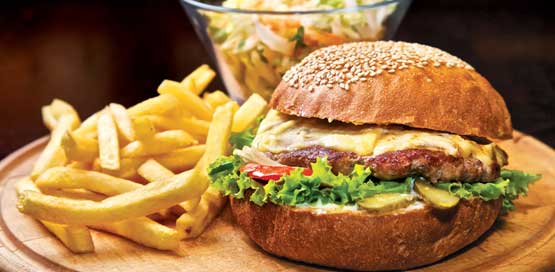El Salvador Corridor, a Koreatown-adjoining micro-neighborhood on Vermont Avenue in front of Two Guys Plaza, became hooked in 2012 on selling Salvadoragencies’efageagencies’nancialtialt. Along street’sewestreet’scet, a flourishing street market serves Salvadorans and different Central Americans anything from cool strips of green mango organized with lime juice, salt, and ground pumpkin seed powder to pickled vegetables in homemade vinegar.
 Over the last nine months, the marketplace has blown up as extra providers have arrived to meet the growing crowds. So, while the neighborhood has worldwide notoriety as a Korean meals vacation spot, it’s also domestic to Oaxacalifornia (the Oaxacan network in California), Bangladeshis, and Central Americans. The largest organization of Salvadorans settled in Westlake, South-Central, and Koreatown, fleeing their horrific Civil War in the 1980s, which became prolonged and escalated due to U.S. Intervention.
Over the last nine months, the marketplace has blown up as extra providers have arrived to meet the growing crowds. So, while the neighborhood has worldwide notoriety as a Korean meals vacation spot, it’s also domestic to Oaxacalifornia (the Oaxacan network in California), Bangladeshis, and Central Americans. The largest organization of Salvadorans settled in Westlake, South-Central, and Koreatown, fleeing their horrific Civil War in the 1980s, which became prolonged and escalated due to U.S. Intervention.
Despite the strife, Salvadorans planted various elements and meals in Los Angeles. The cuisine combines sour herbs and plant life, balanced by flavorful sauces. A pupusa de loroco is a great creation for El SalSalvador. SSalSalvador’s Savored dough packed with cheese and the marginally nutty herb is possibly the most unusual Salvadoran road meal. Pupusas are a pre-Hispanic stuffed corn masa tortilla loved by all cultures from Mesoamérica, which is a part of masa-based cuisine. They range in size and their condiments, with tomato sauce as a commonplace topping, in addition to curtido (pickled cabbage) in different regions of El Salvador.
Today, the providers also sell seafood cocktails, antojitos salvadoreños (Salvadoran cravings), and a huge selection of bread, vegetables, fruit, herbs, beans, and sundries for Salvadoran families.
In his “o” a de “r” f” El Sa” “a” or, Roque Dalton writes, “a” adoreñ” Somos Los comer todos,” which me” “s “Salvadorans will devour anything and in no way move hungry. The marketplace has evidence: Salvadorans were ingesting a diffusion of vegetation lengthy before well-known chefs commenced redecorating their plates with delicate, fit-for-human-consumption blooms.
Thes bounty comes at a time while the White House is putting excessive strain on Central American immigrants and refugees.” W” “k to t” “lace on a sunny weekend morning, and you’ll, in likelihood, see a busy cook from Ahuachapan making plump pupusas full of loroco flower and cheese, beans and cheese, crackling, or everything combined, referred to as revuelta, to order. SSheShe’sterSheShe’stermassiveCambro bins, one full of curtido and the opposite with Cuzcātlan cola champagne-colored escabeche, or pickled vegetables stained by homemade, spiced vinegar crafted from fermented apples and pineapples. Squirt bottles of tomato sauce are the centerpieces at each picnic bench for diners.
On the latest Sunday afternoon, a Honduran woman accompanied by her sister and mom asks about the pasteles, fried corn fritters filled with potatoes. The female snacks on thin strips of gritty green mango included in lime and aguacate (pumpkin seed powder), acknowledged with GGuaGuatemalGuaGuatemalans’d “”” “ome ri” “t “re for the organized inexperienced mango because iit’sllonit’it’syto locate where we live,” e says.” thee sweet mango with chile salt and lime is not unusual in Mexico, green mango speaks to the Central American love for bitter notes and company fruits.
Never has there been fresher products, nor a greater diversity of components, for Salvadorans in LA, who appear to be coming collectively at bustling street markets like this. Some products are moving throughout the border; others are grown regionally. This bounty comes at a time when the White House is setting extreme strain on Central American immigrants and refugees, separating their households and strolling squalid detention facilities at the U.S./Mexico border.
Products like chipilín (an herb that that watercress), Pescado Seco (salt-cured fish for Lenten tortas de Pescado Seco), shuffles fit-to-be-eatenn plants for chicken soup), nippers (loquats), and gallina India (wild, unfastened-variety bird for Sopa de gallina India) are a defiant retort to President TTruTrump’stTruTrump’sti-Centralulesand rhetoric. Their availability proudly states that Salvadorans are an important network in LA. These products and those who buy, cook, and eat them are here to stay.
Claudia, from Santa Ana, and Rosita, from Usulutan (who did not offer their last time) also prepare dinner pupusas at the market. However, their most important enchantment is a heaping plate of yuca con chicharrón (fried cassava desserts and red meat cracklings). Most diners dress with curtido and tomato sauce to add a balance of acid and tang. In El Salvador, the condiments are served on the aspect to avoid a soggy pupusa. Salvadorans do not necessarily eat spicy food. However, tthethere’srthethere’srmMexicanclients and anybody else who likes warmness.





